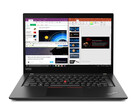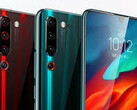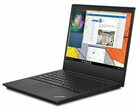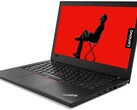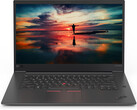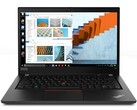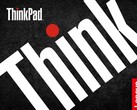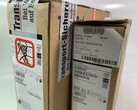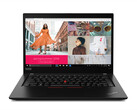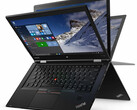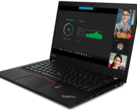The term "lottery" normally is not something that comes to mind when people are talking about PC laptop hardware. But in fact, in many cases people who buy laptops are playing a lottery – the part lottery. Components like SSDs, keyboards and screens are often standardized, which opens up the possibility for the laptop manufacturers to use parts from many different sources. The PC manufacturers use this freedom, as it lowers their dependence on the individual parts manufacturers.
This would not be problematic, if the parts always were roughly equal in quality. Since this often is not the case, buying a laptop sometimes can feel like gambling, as one user might receive a device with a slower SSD, darker screen and mushier keyboard than another.
Recently, the Lenovo ThinkPad E485 served as a practical example of this phenomenon. We tested affordable business laptop with AMD processors recently and were lucky enough to get two review samples of the configuration 20KU000NGE. This model contains a FHD screen (1,920 x 1,080), which should reach a brightness level of 250 cd/m² according to Lenovo.
The two units contained very different 14 inch screens: The first unit contained a display made by the panel manufacturer AUO, while the other Lenovo E485 used a screen made by Innolux. This would not be a big issue, if it weren't for the huge difference in screen brightness: While the AUO screen delivered an average brightness of 270 cd/m², the Innolux only reached 193 cd/m² – it not only missed the promised 250 cd/m², but even failed to achieve 200 cd/m² of brightness. 200 cd/m² is the lowest brightness we normally accept in a modern laptop.
Buyers of the Lenovo ThinkPad E485 should thus be on the lookout, as they might receive a unit with a much darker screen than advertised. In practice, such a dark screen is pretty much unusable outdoors, even with a matte screen surface.
| Lenovo ThinkPad E485-20KU000NGE Innolux N140HCA-EAC | Lenovo ThinkPad E485-20KU000NGE B140HAN04.2 | |
|---|---|---|
| Display | ||
| Display P3 Coverage (%) | 41.38 | 39.21 38.48 |
| sRGB Coverage (%) | 62 | 58.8 57.9 |
| AdobeRGB 1998 Coverage (%) | 42.78 | 40.52 39.76 |
| Response Times | ||
| Response Time Grey 50% / Grey 80% * (ms) | 29 ? | 44.8 ? |
| Response Time Black / White * (ms) | 26 ? | 33.6 ? |
| PWM Frequency (Hz) | 25000 ? | |
| Screen | ||
| Brightness middle (cd/m²) | 221 | 289 |
| Brightness (cd/m²) | 194 | 271 |
| Brightness Distribution (%) | 74 | 87 |
| Black Level * (cd/m²) | 0.19 | 0.19 |
| Contrast (:1) | 1163 | 1521 |
| Colorchecker dE 2000 * | 4.67 | 5.6 |
| Colorchecker dE 2000 max. * | 9.17 | 20.8 |
| Colorchecker dE 2000 calibrated * | 4.3 | 4.7 |
| Greyscale dE 2000 * | 3.81 | 2.7 |
| Gamma | 2.24 98% | 1.96 112% |
| CCT | 6177 105% | 6506 100% |
| Color Space (Percent of AdobeRGB 1998) (%) | 39 | 37.2 |
| Color Space (Percent of sRGB) (%) | 62 | 58.5 |
| Total Average (Program / Settings) |
* ... smaller is better
Source(s)
Own






